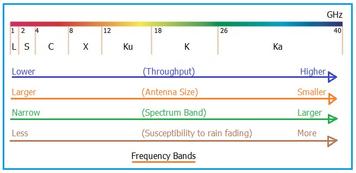
WLAN Probe Request and Response Frames Explained
Understand WLAN probe request and response frames, including their fields, function in network scanning, and relationship to network access.
Advertisement

Understand WLAN probe request and response frames, including their fields, function in network scanning, and relationship to network access.

Understand the WLAN reassociation request and response frames used when mobile stations move between access points or return to a network.
Comparison of WLAN technologies including Infrared, Spread Spectrum, and Radio Frequency (RF), detailing data rates, coverage, and modulation techniques.
Understand common WLAN terms including 802.11 standards, Wi-Fi hotspots, access points, and related concepts. A concise guide to wireless networking terminology.

Explore the fundamental differences between Wireless LAN (WLAN) and Ethernet LAN technologies, covering standards, transmission methods, and susceptibility to interference.

Learn about WLAN (Wireless Local Area Network), its standards, benefits, drawbacks, and applications in homes, offices, and public spaces.

Explore the principles, features, and applications of WR28 and WR90 horn waveguide antennas, vital in high-frequency communication and radar.

Explore the pros and cons of written communication. Learn about different types and how to use it effectively for clarity and documentation.
Explore the key differences between Wireless Sensor Networks (WSNs) and Ad Hoc Networks. Understand their distinct features, deployment scenarios, and limitations.

Explore the WXC (Wavelength Crossconnect) in fiber optics, detailing its function as a ROADM in mesh networks, offering N x N connectivity and reliable configuration.
Explore the benefits and drawbacks of X (formerly Twitter), from real-time updates and global reach to misinformation and potential addiction. Understand the pros and cons.

Explore X band frequency characteristics, including its range (8-12 GHz), advantages like lower rain fade and noise, and applications in satellite communication and meteorology.
Explore the advantages and disadvantages of X-ray imaging, a common diagnostic tool used for visualizing internal body structures. Learn about its benefits and risks.
Explore the key differences between X-Ray and millimeter wave (mm-wave) technologies, including their wavelengths, frequencies, applications, advantages, and disadvantages.

Explore the distinctions between X-rays and gamma rays: origins, energy levels, applications, advantages, and disadvantages. Crucial for imaging, diagnostics, and cancer treatment.

Explore the X.25 protocol, covering its benefits such as reliability and faster response times, as well as its drawbacks, including low data rates and overhead.

Explore the pros and cons of the X10 protocol for home automation. Learn about its benefits and drawbacks as a powerline communication technology.

Explore the X10 protocol for home automation, including X10 signals, packet formats, and physical layer details. Learn how this powerline signaling technology enables communication between IoT devices.

Explore the benefits and drawbacks of XaaS (Anything as a Service), a cloud computing model delivering various services over the internet. Learn about cost savings, security, and challenges.
A comparison of XBEE Series 1 and Series 2 Zigbee radios, highlighting differences in range, features, and applications. Includes a comparison table.
Advertisement